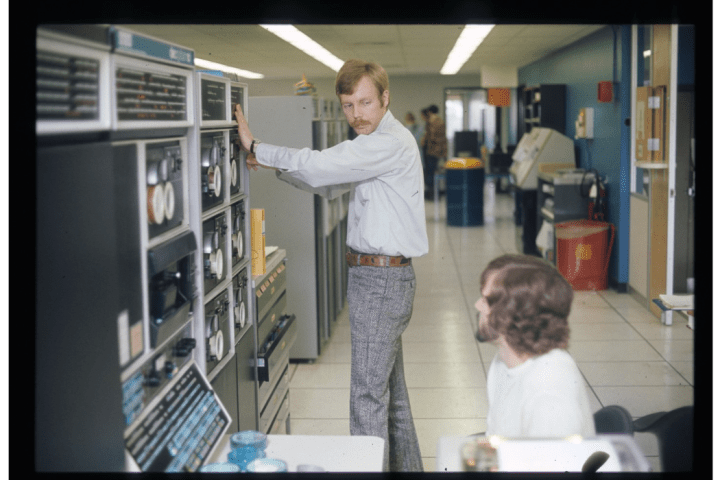How UCI and AI go waaay back (UCI News)
The campus began exploring artificial intelligence in the mid-1960s
Decades before ChatGPT, Tesla autopilot and Siri, there was Julian Feldman and a monstrous mainframe.

It was 1968, and UCI’s interdisciplinary program in information and communication science had just become a pioneering, standalone computer science department. At the helm was Feldman, who had co-edited a groundbreaking anthology of AI research a few years earlier. His fledgling department soon expanded UCI’s original computing courses – which had mentioned artificial intelligence concepts – to include graduate seminars and workshops devoted to the subject. But the lessons were largely theoretical.
“A lot of the ideas we’re using now were around then,” says Padhraic Smyth, Chancellor’s Professor of computer science. “But they couldn’t do them in the 1960s because computers were too primitive.”
….
From those humble beginnings, ICS faculty and alumni helped pioneer some of the computing world’s most important advances, including HTTP and the domain name system, two cornerstones of the internet.
In the 1980s, UCI began earning international recognition for machine learning, a branch of AI in which a computer teaches itself a task by analyzing images or data. The university is particularly famous in the AI universe for its Machine Learning Repository, a storehouse of datasets on such disparate topics as Pittsburgh bridges, Asian religious texts, perfume, diabetes, Bach chorales and balloons. Launched in 1987 by Ph.D. student David Aha, the repository is used by AI scientists around the globe to test algorithms.
Thanks in part to the advent of powerful video game computer chips in 2012, AI has caught fire in recent years – and spread to departments across campus.
Inspired by everything from rodents to Rubik’s Cubes, UCI researchers are developing the next generation of AI technology. Some are spearheading projects to improve healthcare or solve crimes. Others use AI to create interactive art or grapple with climate change.
The range is all over the map.
Read the full story in UCI News.